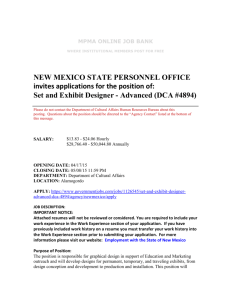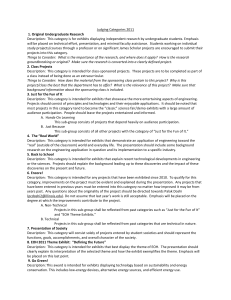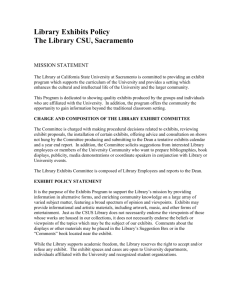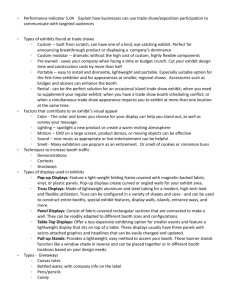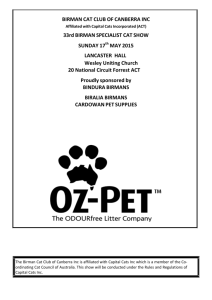Energy Management
advertisement
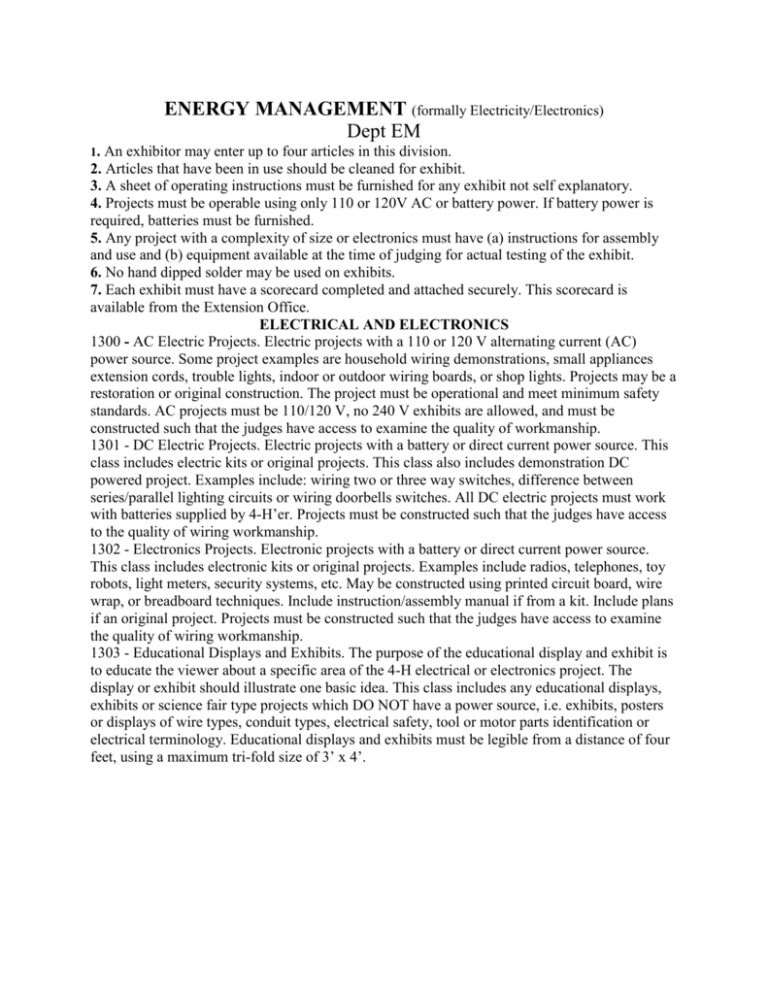
ENERGY MANAGEMENT (formally Electricity/Electronics) Dept EM 1. An exhibitor may enter up to four articles in this division. 2. Articles that have been in use should be cleaned for exhibit. 3. A sheet of operating instructions must be furnished for any exhibit not self explanatory. 4. Projects must be operable using only 110 or 120V AC or battery power. If battery power is required, batteries must be furnished. 5. Any project with a complexity of size or electronics must have (a) instructions for assembly and use and (b) equipment available at the time of judging for actual testing of the exhibit. 6. No hand dipped solder may be used on exhibits. 7. Each exhibit must have a scorecard completed and attached securely. This scorecard is available from the Extension Office. ELECTRICAL AND ELECTRONICS 1300 - AC Electric Projects. Electric projects with a 110 or 120 V alternating current (AC) power source. Some project examples are household wiring demonstrations, small appliances extension cords, trouble lights, indoor or outdoor wiring boards, or shop lights. Projects may be a restoration or original construction. The project must be operational and meet minimum safety standards. AC projects must be 110/120 V, no 240 V exhibits are allowed, and must be constructed such that the judges have access to examine the quality of workmanship. 1301 - DC Electric Projects. Electric projects with a battery or direct current power source. This class includes electric kits or original projects. This class also includes demonstration DC powered project. Examples include: wiring two or three way switches, difference between series/parallel lighting circuits or wiring doorbells switches. All DC electric projects must work with batteries supplied by 4-H’er. Projects must be constructed such that the judges have access to the quality of wiring workmanship. 1302 - Electronics Projects. Electronic projects with a battery or direct current power source. This class includes electronic kits or original projects. Examples include radios, telephones, toy robots, light meters, security systems, etc. May be constructed using printed circuit board, wire wrap, or breadboard techniques. Include instruction/assembly manual if from a kit. Include plans if an original project. Projects must be constructed such that the judges have access to examine the quality of wiring workmanship. 1303 - Educational Displays and Exhibits. The purpose of the educational display and exhibit is to educate the viewer about a specific area of the 4-H electrical or electronics project. The display or exhibit should illustrate one basic idea. This class includes any educational displays, exhibits or science fair type projects which DO NOT have a power source, i.e. exhibits, posters or displays of wire types, conduit types, electrical safety, tool or motor parts identification or electrical terminology. Educational displays and exhibits must be legible from a distance of four feet, using a maximum tri-fold size of 3’ x 4’. SMALL ENGINES All exhibits should involve engines smaller than 20 horsepower for classes 1305-1307. Displays are limited to 4’ wide and 4’ deep - both upright and floor displays. 1305 - DISPLAY - Exhibit a display, selecting one of the following options: a display identifying different engine or lawn and garden equipment parts or a display showing the function of the various engine or lawn and garden equipment parts; OR a display identifying and explaining the function(s) of different special tools needed for small engine work; OR 3) a display illustrating and providing the results of any one of experiments that are included in the project books. No complete engines, lawn tractors, tillers, chainsaws are permitted for display. Maximum tri-fold size is 3’ x 4’. 1306 - MAINTENANCE - Exhibit a display that illustrates either 1) Routine maintenance procedures OR 2) Diagnosing and trouble shooting specific problems in an engine. No complete engines, lawn tractors, tillers, chainsaws, etc. are permitted for display, using a maximum trifold size of 3’ x 4’. 1307 - OPERATION - Exhibit an operable small engine (no more than 20 HP) overhauled or rebuilt by the member. Include maintenance schedule for the engine and a brief description of steps taken by the member overhauling or rebuilding the engine. Maximum tri-fold size is 3’ x 4’. Engine should contain no fuel in tank or carburetor. Alternative ENERGY (A form of energy derived from a natural source, such as the sun, geothermal, wind, tides or waves) All exhibits in this division are limited in size to standard, tri-fold, display boards (36” X 48”) and items may not extend beyond 12” from the back board. All displays must be self-standing. 1308 EDUCATIONAL DISPLAY - Create an exhibit that addresses a focused topic related to power generated from a renewable energy source. The purpose of the exhibit is to inform and create awareness. 1309 EXPERIMENT - Display an experiment addressing a problem or question related to power generated from a renewable energy source. Include hypothesis, background research, variables, a control, data, findings, conclusions and recommendations for future study.
